
Published in the December 2011 issue of “Die Porsche Kassette”
In this era of eco-friendliness where everyone wants to be green and help preserve and protect the planet, sometimes it seems that we can’t.
I mean, how can you remove years and years of road grime on a Porsche’s engine, tranny, and under carriage without using harsh chemicals such as degreasers, solvents, abrasives, acids, etc., etc.?
Well, I just ran into the coolest and most eco-friendliest way of doing this.
I went to visit the owner a local Porsche Shop in the area, and when I got there I saw something that made my heart skip a beat or two.
They had a Carrera GT (yes, the $400,000 supercar from Porsche) on a lift and I could have sworn that they were sandblasting the $20,000 PCCB (Porsche Ceramic Composite Brakes) rotors and calipers. I though my friend had just lost it!
I quickly ran over to stop the madness, but as I got closer, I saw that what was coming out of the nozzle wasn’t sand, but what looked like water vapor.
“Cool”, I said to the owner, “using steam to clean the car?” “Nope”, he said, “that’s not steam, it’s CO2 “ (carbon dioxide).
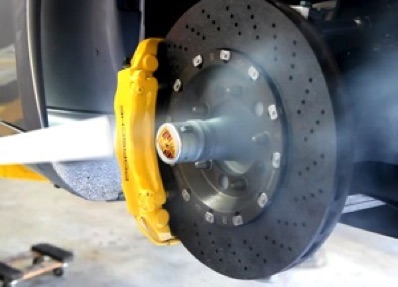
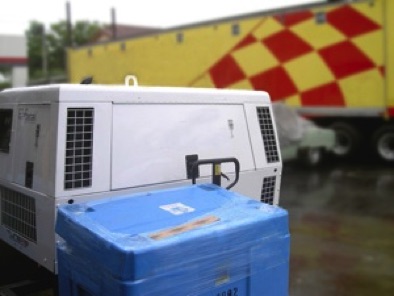
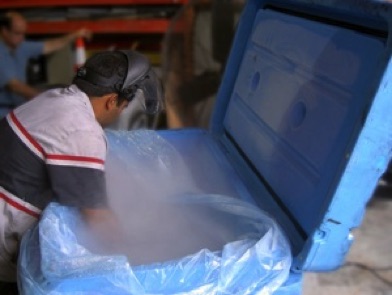
I was immediately intrigued and started asking questions:
“So, what is it and how does it work?”, “How do you generate CO2 under pressure?”, “Will it peel off the caliper’s paint?”, “What other chemicals do you add to the CO2 in order to clean?”, and a bunch of other ones.
He stopped what he was doing and started to explain:
“This is called Cryo Detailing and we’re the first ones in the South East to apply the technology to automotive use. It has a very powerful, specially designed air compressor to blast away oil, grease, and stuck-on grime using only CO2”.
“It is safe on paint, soft rubber, decals, etc.” and he then showed me how safe it was by blasting the beautiful, Carrera Silver, left fender on the Carrera GT with his nozzle. I carefully inspected it, and it was perfect.
We do not add anything else. It’s just pressurized air and CO2“. “Come with me, let me show you what’s inside the machine”. I followed him and we went to a giant blue plastic bin which as he opened it I could see that it was full of what looked like steaming rice. It was obviously rice-like CO2 pellets.
As they were reloading the unit again with the pellets I took a handful (which almost burnt my hand from the intense cold) to photograph them, next to a penny to give you an idea of their size.
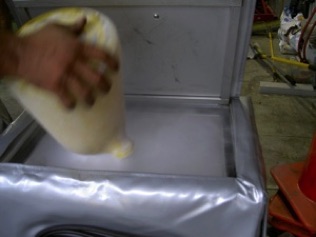
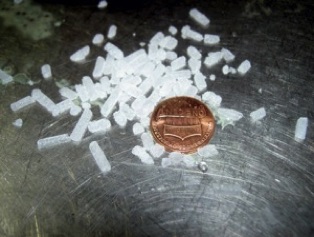
“The machine is fairly simple”, he said, “it’s a big air compressor which generates very dry, pressurized air, then uses the pressure and a venturi to add the CO2 pellets to the stream of compressed air through a hose. Before it reaches the end, we install the correct size-for-the-task mesh and nozzle for the particular job we’re doing”.
“So, depending on the air pressure, on the dry-ice particle size and on the nozzle’s diameter and length we can do such delicate work as clean the white thread’s stitching on a leather seat or we can strip off paint.”
“Why dry ice?” I asked.
He answered: “The cold temperature, which can be brought down to 111〬F below zero basically deep-freezes the grime which is then blasted away by the air pressure and the small dry ice pellets. That’s why there’s no residue other than the dirt we’ve just removed.”
“So did you guys invent this or what?”
“No”, he said, “this technology is actually used by Porsche and its dealers in Germany, as a standard service. We’re just the first in the area to offer this service.”
When I got back to my office I went online to check and I found this on Porsche’s European Website:
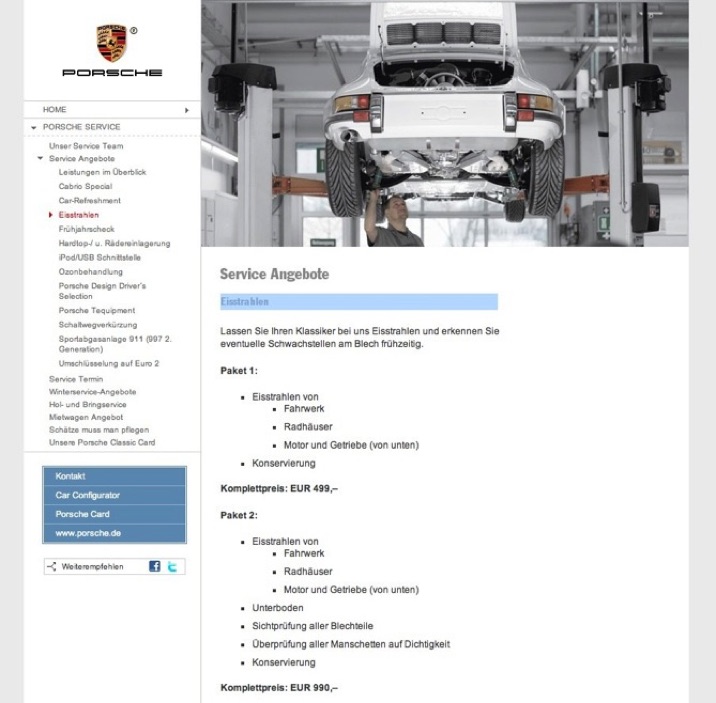
But, the skeptic that I am I said: “well, this is nice and dandy on a concour-ready Carrera GT, but does it really work on old, baked-in crud as that on my 14 year-old, 214,000 mile Boxster? ;) ;)
He said, “bring it in tomorrow and I’ll show you.”
The next day I was there bright and early with my old girl.
First I took a couple of “before” pictures to have something to compare. Now, you be the judge:
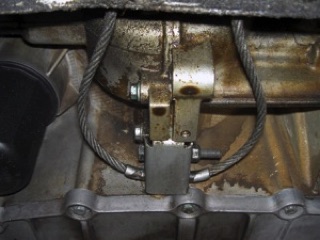
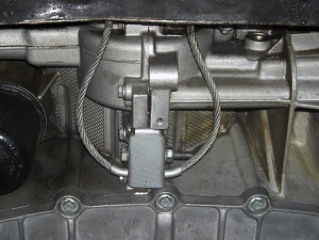

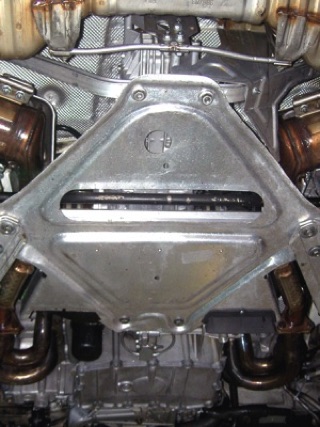

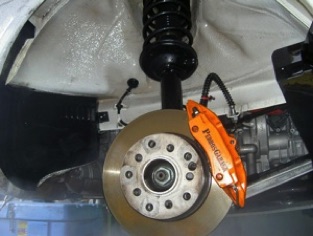
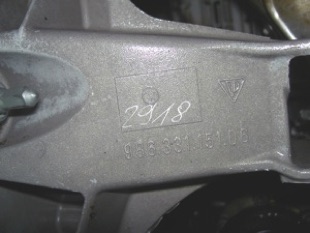
But maybe what impressed me the most was how delicately the Cryo Detail takes off the grime but leaves the part completely undisturbed.
Take a look at this aluminum suspension part which was scribed at the factory with “2918”. You can see how well it cleaned, yet you can still see that the original aluminum surface was not altered (sandblasted) in any way.
This is really interesting technology, in particular for engine builders, car restorers and Councour D’legance enthusiasts or just anyone who wants their Porsche as clean as possible, even in places that no one ever sees. And the best part – it’s eco-friendly!
To learn more about Cryo Detail and more, please visit my website at:
Happy Porsche-ing,
Pedro
© 2011 Technolab/PedrosGarage.com


